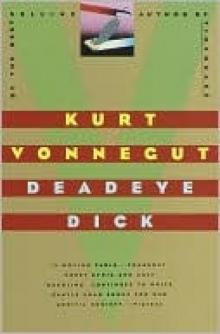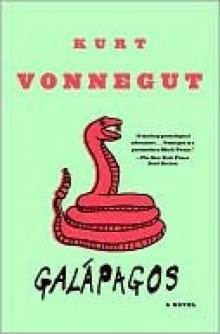- Home
- Kurt Vonnegut
While Mortals Sleep: Unpublished Short Fiction
While Mortals Sleep: Unpublished Short Fiction Read online
(illustration credit 1)
BY KURT VONNEGUT
A Man Without a Country
Armageddon in Retrospect
Bagombo Snuff Box
Between Time and Timbuktu
Bluebeard Breakfast of Champions
Canary in a Cat House
Cat’s Cradle
Deadeye Dick
Fates Worse Than Death
Galápagos
God Bless You, Dr. Kevorkian
God Bless You, Mr. Rosewater
Happy Birthday, Wanda June
Hocus Pocus
Jailbird
Like Shaking Hands with God (with Lee Stringer)
Look at the Birdie
Mother Night
Palm Sunday
Player Piano
The Sirens of Titan
Slapstick
Slaughterhouse-Five
Timequake
Wampeters, Foma & Granfalloons
Welcome to the Monkey House
While Mortals Sleep is a work of fiction. Names, characters, places, and incidents, fictional and factual, are the products of the author’s imagination. Any resemblance to actual persons, living or dead, businesses, companies, events, or locales is entirely coincidental. The writings by Kurt Vonnegut in this collection have been edited only minimally from the originals. Typographical and minor factual errors have been corrected.
Copyright © 2011 by The Kurt Vonnegut, Jr., Trust
Foreword © 2011 by Dave Eggers
All rights reserved.
Published in the United States by Delacorte Press, an imprint of The Random House Publishing Group, a division of Random House, Inc., New York.
DELACORTE PRESS is a registered trademark of Random House, Inc., and the colophon is a trademark of Random House, Inc.
Cover illustration by Kurt Vonnegut. Copyright © 1977 Kurt Vonnegut / Origami Express, LLC. www.vonnegut.com
For complete credits for the original illustrations by Kurt Vonnegut contained in this work, see this page.
eISBN: 978-0-440-33987-8
www.bantamdell.com
Jacket design: Lynn Buckley
Cover illustration by Kurt Vonnegut
copyright © 1997 Kurt Vonnegut/
Origami Express, LLC/www.vonnegut.com
Author photograph: © 1994 by Rosemary Carroll
v3.1
FOREWORD
by Dave Eggers
I’ve been thinking a lot about what we lost when we lost Kurt Vonnegut, and the main thing that keeps coming to mind is that we lost a moral voice. We lost a very reasonable and credible—though not to say staid or toothless—voice who helped us know how to live.
With the internet, god bless it, we are absolutely overrun with commentary and opinions. Can’t tell just yet, but so far, this seems fine. The access for everyone—commentators and their audiences—is more democratically available, and this is surely good. We have a million or so people offering daily advice, insight, perspective, and the occasional attempt to help us live in better harmony with our planet and our fellow humans. On the other hand, to get attention on the internet (and on television, for that matter), a commentator, more often than not, has to be loud, radical, or insane. And so the vast majority of such commentary is all three.
Then we have our novelists and short-story writers. By comparison, these people seem sane and well mannered. The catch is, they are, by and large, very quiet. They toil in the woods or on campuses or in Brooklyn, and they are so polite that they would never tell anyone, let alone their readers, how to live. And so the majority of contemporary literature, though it truly is brilliant and wonderful in myriad ways, is also free of moral instruction.
Now, I’m not saying that literature must tell us how to live, or must offer clear moral directives. No. No. I’m not saying that, internet commentators. But I am saying that it’s okay for some contemporary literature to do so. In a pluralistic literary environment—and we need such a thing, we need to maintain it, to nourish it so that dozens of styles and genres can coexist free of the misguided notion that there is one miraculous form that obviates all others—in such an environment, couldn’t there be a few writers who come out and say, “This is bad, that is good?”
But precious few writers do so. We have collectively shrunk from any clear instructive point in our work. As a result, our short stories—let’s talk, here, about short stories primarily, given our present context—are full of lovely sentences and nuance, but they are also lacking, too often, in punch.
I will be the first to admit that I, too, have been trained to shy away from offering a tidy end, or moral point, to a story. Come to think of it, I’m not sure I’ve ever sent a simple declarative message in any short story. I came of age as a writer when to do so would have been out of the question. I was at least two generations removed from the days when a popular and literary short story would attempt to deliver a neat ending to a story, a conclusion that would cause the reader surprise and also recognition of a point made clearly and well.
But Vonnegut has always done so. And increasingly, what he did seems rare and necessary. Most of his short stories have resolutions that make abundantly clear that a lesson has been learned, by the characters (usually) and the reader (always).
I’ve been an avid reader of Vonnegut since I was a teenager, but it wasn’t until I read these last two posthumous collections of stories, While Mortals Sleep and Look at the Birdie, that I’ve realized just how strong a moralist Vonnegut was. I knew that as a man and as an essayist, he was not shy about making his opinions known. He spoke highly of Jesus Christ, and he made clear and simple pronouncements such as, “Goddamn it, you’ve got to be kind.” And because he looked a bit like a hippie Mark Twain and appeared older than he was, he could carry it off. He seemed, even in early middle age, to be one of those elder statesmen who could declare his opinions, grumpily, about anything, and people would attach to these statements a certain gravitas—well earned through his exemplary work and life. When you have fought in WWII, when you have survived Dresden, when you have supported your own family and also taken in the four orphaned children of your sister (after she and her husband died only days apart), then you’ve got some credit in the moral-authority bank.
And so we have these stories, which were written early in his career, when Vonnegut was trying to make a living as a writer. He was writing a great deal of short fiction at the time, and he was trying—often successfully—to sell these stories to magazines like Collier’s and The Saturday Evening Post, which were then publishing a good deal of short fiction. Clearly, the way he wrote at the time was influenced a certain amount by what he knew these publications wanted. They wanted stories of relatively unadorned prose, tight plotting, simple conflict, and ideally an unexpected twist at the end.
These are what might be called mousetrap stories. This was once a popular, if not dominant, form. But you don’t see it much anymore. We’re now in the age of what might be called photorealistic stories. What we have with most contemporary short stories is a realism, a naturalism, that gives us roughly what photography gives us. A gifted photographer will frame reality in a way that seems both real and novel. His or her work will “hold a mirror” to our lives, but in such a way that we see ourselves anew. All art forms attempt this mirror-holding, but photography, and the contemporary short story, are particularly well-designed delivery devices for this aim. And thus the contemporary short story gives us characters who breathe, who seem three-dimensional, who live in real places, who have real jobs and struggles and pain. The stories are to a great extent in service to these characters. The characters make realistic mo
ves in their lives, realistic choices, and the outcomes are plausible and perhaps even pedestrian.
Not as much so in a mousetrap story. A mousetrap story exists to trick or trap the reader. It moves the reader along, through the complex (but not too complex) machinery of the story, until the end, when the cage is sprung and the reader is trapped. And so in this kind of story, the characters, the setting, the plot—they’re all more or less means to an end.
This isn’t to say the characters aren’t real-seeming, aren’t believable or sympathetic or any of the other things we might want characters to be. On the contrary, Vonnegut is masterful at quickly sketching a character who you instantly recognize and immediately are willing to follow. But in the end, their routes are determined by the master mousetrap maker, their fates in service to the larger point.
And so, when you start a story in this collection, you know you are being set up. And you know what? It’s fun to be set up. This collection is full of relatively simple stories, about relatively simple problems. In one story, a husband plays with his model trains too much, neglecting his wife in the process. (A far cry from Cat’s Cradle.) In another, a newspaper editor who derides Christmas learns something about its true meaning when forced to judge a holiday lighting competition. A young woman inherits a fortune and finds the burden crushing and her new suitors untrustworthy. (Note just how many of these stories involve the pursuit of mid-century ideas of success—a quick fortune, a stretch limo, nice dividends on a stock portfolio; Vonnegut, working as a PR man, was no doubt struggling to get over a financial hump himself.)
In any case, no matter what the plot, you as the reader know that by the end of the story, you will get somewhere. That Vonnegut will tell you something with candor and clarity. That being a decent person is an achievable and desirable thing. That faith has value. That wealth solves few problems. Simple enough messages, sure, but there’s a reason to be reminded of such things, and relief in having them expressed artfully but with a certain lack of obfuscation.
These early-career stories are different from Vonnegut’s later novels, where the tone is darker, grimmer, more exasperated, where the nuances are many and the lessons more complex. Though while writing these stories, Vonnegut had already seen the decimation of Dresden, had tramped amid the charred bodies of thousands of civilians, had spent time in a German POW camp, the stories in While Mortals Sleep have the bright-eyed clarity of a young man just beginning to understand the workings of the world. You can almost imagine a kindly looking guy in a cardigan and penny loafers writing the stories in a malt shop, filling the juke box with quarters, typing happily away.
But of course he wasn’t that. He was a man with kids trying to support his family while edifying the readers of Ladies’ Home Journal. Later, of course, he’d be writing, repeatedly, about the end of the world. And sometimes incest, and often enough about the folly of war, and the greed and depravity of our industries and government. But for now, we have the eager young mousetrap maker, and we are his willing prey.
CONTENTS
Cover
Other Books by This Author
Title Page
Copyright
Foreword by Dave Eggers
Jenny
The Epizootic
Hundred-Dollar Kisses
Guardian of the Person
With His Hand on the Throttle
Girl Pool
Ruth
While Mortals Sleep
Out, Brief Candle
Tango
Bomar
The Man Without No Kiddleys
Mr. Z
$10,000 a Year, Easy
Money Talks
The Humbugs
Illustrations
About the Author
(illustration credit 3)
JENNY
George Castrow used to come back to the home works of the General Household Appliances Company just once a year—to install his equipment in the shell of the new model GHA refrigerator. And every time he got there he dropped a suggestion in the suggestion box. It was always the same suggestion: “Why not make next year’s refrigerator in the shape of a woman?” Then there would be a sketch of a refrigerator shaped like a woman, with arrows showing where the vegetable crisper and the butter conditioner and the ice cubes and all would go.
George called it the Food-O-Mama. Everybody thought the Food-O-Mama was an extra-good joke because George was out on the road all year long, dancing and talking and singing with a refrigerator shaped like a refrigerator. Its name was Jenny. George had designed and built Jenny back when he’d been a real comer in the GHA Research Laboratory.
George might as well have been married to Jenny. He lived with her in the back of a moving van that was mostly filled with her electronic brains. He had a cot and a hot plate and a three-legged stool and a table and a locker in the back of the van. And he had a doormat he put on the bare ground outside when he parked the van somewhere for the night. “Jenny and George,” it said. It glowed in the dark.
Jenny and George went from appliance dealer to appliance dealer all over the United States and Canada. They would dance and sing and crack jokes until they’d collected a good crowd in a store. Then they would make a strong sales pitch for all the GHA appliances standing around doing nothing.
Jenny and George had been at it since 1934. George was sixty-four years old when I got out of college and joined the company. When I heard about George’s big paycheck and his free way of life and the way he made people laugh and buy appliances, why I guessed he was the happiest man in the company.
But I never got to see Jenny and George until I got transferred out to the Indianapolis offices. One morning out there we got a telegram saying Jenny and George were in our neck of the woods somewhere—and would we please find them and tell George his ex-wife was very sick? She wasn’t expected to live. She wanted to see him.
I was very surprised to hear he’d had a wife. But some of the older people in the office knew about her. George had only lived with her for six months—and then he’d hit the road with Jenny. His ex-wife’s name was Nancy. Nancy had turned right around and married his best friend.
I got the job of tracking Jenny and George down. The company never knew exactly where they were. George made his own schedule. The company gave him his head. They just kept rough track of him by his expense accounts and by rave letters they’d get from distributors and dealers.
And almost every rave letter told about some new stunt that Jenny’d done, that Jenny’d never been able to do before. George couldn’t leave her alone. He tinkered with her every spare minute, as though his life depended on making Jenny as human as possible.
I called our distributor for central Indiana, Hal Flourish. I asked him if he knew where Jenny and George were. He laughed to beat the band and said he sure did. Jenny and George were right in Indianapolis, he said. They were out at the Hoosier Appliance Mart. He told me Jenny and George had stopped early morning traffic by taking a walk down North Meridian Street.
“She had on a new hat and a corsage and a yellow dress,” he said. “And George was all dolled up in his soup and fish and yellow spats and a cane. You would of died. And you know how he’s got her fixed up now, so’s he knows when her battery’s running down?”
“Nossir,” I said.
“She yawns,” he said, “and her eyelids get all droopy.”
Jenny and George were starting their first show of the day when I got out to the Hoosier Appliance Mart. It was a swell morning. George was on the sidewalk in the sunshine, leaning on the fender of the moving van that had Jenny’s brains in it. He and Jenny were singing a duet. They were singing the “Indian Love Call.” They were pretty good. George would sing, “I’ll be calling you-hoo,” in a gravel baritone. Then Jenny would answer back from the doorway of the Mart in a thin, girlish soprano.
Sully Harris, who owned the Mart, was standing by Jenny with one arm draped over her. He was smoking a cigar and counting the house.
&nb
sp; George had on the dress suit and yellow spats Hal Flourish had laughed so hard about. George’s coattails dragged on the ground. His white vest was buttoned down around his knees. His shirt bosom was rolled up under his chin like a window blind. And he had on trick shoes that looked like bare feet the size of canoe paddles. The toenails were painted fire-engine red.
But Hal Flourish is the kind of man who thinks anything that’s supposed to be funny is funny. George wasn’t funny if you looked at him closely. And I had to look at him closely because I wasn’t there for a good time. I was bringing him sad news. I looked at him closely, and I saw a small man getting on in years and all alone in this vale of tears. I saw a small man with a big nose and brown eyes that were just sick about something.
But most people in the crowd thought he was a howl. Just here and there you’d see a few people who saw what I saw. Their smiles weren’t making fun of George. Their smiles were kind of queer and sweet. Their smiles mostly seemed to ask how Jenny worked.
Jenny was radio-controlled, and the controls were in those trick shoes of George’s—under his toes. He would punch buttons with his toes, and the shoes would send out signals to Jenny’s brains in the moving van. Then the brains would signal Jenny what to do. There weren’t any wires between Jenny and George and the van.
It was hard to believe George had anything to do with what Jenny was up to. He had a little pink earphone in his ear, so he could hear everything anybody said to Jenny, even when she was a hundred feet away. And he had little rearview mirrors on the frames of his glasses, so he could turn his back to her and still see everything she did.

 Slaughterhouse-Five
Slaughterhouse-Five Bagombo Snuff Box: Uncollected Short Fiction
Bagombo Snuff Box: Uncollected Short Fiction God Bless You, Dr. Kevorkian
God Bless You, Dr. Kevorkian Breakfast of Champions
Breakfast of Champions While Mortals Sleep: Unpublished Short Fiction
While Mortals Sleep: Unpublished Short Fiction Slapstick or Lonesome No More!
Slapstick or Lonesome No More! Cat's Cradle
Cat's Cradle The Sirens of Titan
The Sirens of Titan A Man Without a Country
A Man Without a Country Look at the Birdie: Unpublished Short Fiction
Look at the Birdie: Unpublished Short Fiction Bluebeard
Bluebeard Hocus Pocus
Hocus Pocus The Big Trip Up Yonder
The Big Trip Up Yonder Palm Sunday: An Autobiographical Collage
Palm Sunday: An Autobiographical Collage Jailbird
Jailbird Happy Birthday, Wanda June
Happy Birthday, Wanda June Welcome to the Monkey House
Welcome to the Monkey House Player Piano
Player Piano Fates Worse Than Death: An Autobiographical Collage
Fates Worse Than Death: An Autobiographical Collage Love, Kurt
Love, Kurt Timequake
Timequake God Bless You, Mr. Rosewater
God Bless You, Mr. Rosewater 2 B R 0 2 B
2 B R 0 2 B The Eden Express: A Memoir of Insanity
The Eden Express: A Memoir of Insanity Mother Night
Mother Night Deadeye Dick
Deadeye Dick Galápagos
Galápagos Palm Sunday
Palm Sunday We Are What We Pretend to Be
We Are What We Pretend to Be Look at the Birdie
Look at the Birdie Basic Training
Basic Training Armageddon in Retrospect
Armageddon in Retrospect Basic Training (Kindle Single)
Basic Training (Kindle Single) If This Isn't Nice, What Is?
If This Isn't Nice, What Is? Bagombo Snuff Box
Bagombo Snuff Box The Petrified Ants
The Petrified Ants Cat's Cradle: A Novel
Cat's Cradle: A Novel Fates Worse Than Death: An Autobiographical Collage (Kurt Vonnegut Series)
Fates Worse Than Death: An Autobiographical Collage (Kurt Vonnegut Series)